Parents Longqing Emperor | Children Taichang Emperor Name Wanli Emperor | |
 | ||
Reign 19 July 1572 – 18 August 1620 Born 4 September 1563 ( 1563-09-04 ) Spouse Wang Xijie (m. 1578), Empress Xiao Jing Similar People Longqing Emperor, Tianqi Emperor, Jiajing Emperor, Chongzhen Emperor, Emperor Yingzong of Ming | ||
Tomb of wanli emperor of ming dynasty
The Wanli Emperor (Chinese: 萬曆; pinyin: Wàn Lì; 4 September 1563 – 18 August 1620), personal name Zhu Yijun (Chinese: 朱翊鈞; pinyin: Zhū Yìjūn), was the 13th emperor of the Ming dynasty of China. "Wanli", the era name of his reign, literally means "ten thousand calendars". He was the third son of the Longqing Emperor. His reign of 48 years (1572-1620) was the longest among all the Ming dynasty emperors and it witnessed the steady decline of the dynasty.
Contents
- Tomb of wanli emperor of ming dynasty
- Wanli Emperor reign 1572 1620
- Early reign 15721582
- Middle reign 15821600
- Late reign 16001620
- Palace assault
- Legacy and death
- Consorts
- Concubines
- Sons
- Daughters
- References
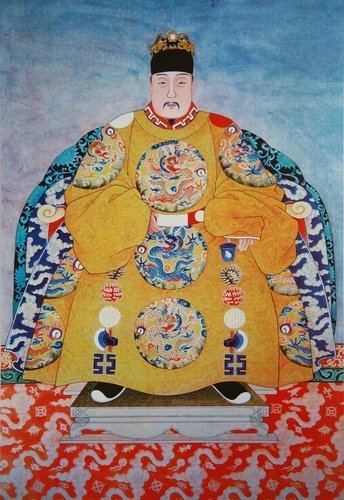
Фарфор периода Ваньли династии Мин. Wanli Emperor reign (1572-1620)
Early reign (1572–1582)
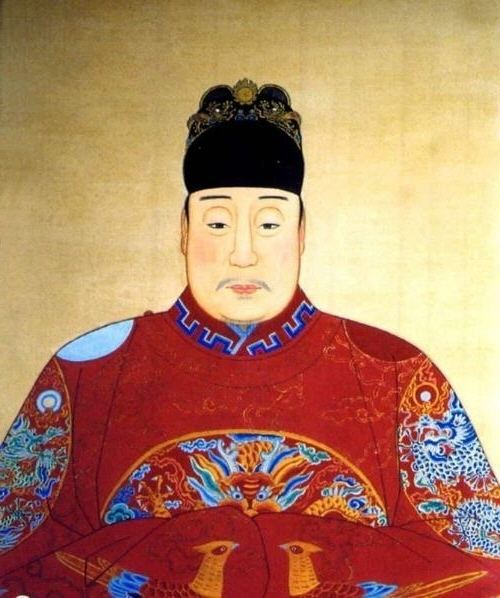
Zhu Yijun ascended the throne at the age of ten and adopted the regnal name "Wanli", thus he is historically known as the Wanli Emperor. For the first ten years of his reign, he was aided by the Senior Grand Secretary (shǒufǔ), Zhang Juzheng, who governed the country as Yijun's regent. During this period, the Wanli Emperor deeply respected Zhang as a mentor and a valued minister. Archery competitions, equestrianism and calligraphy were some of the pastimes of Wanli.
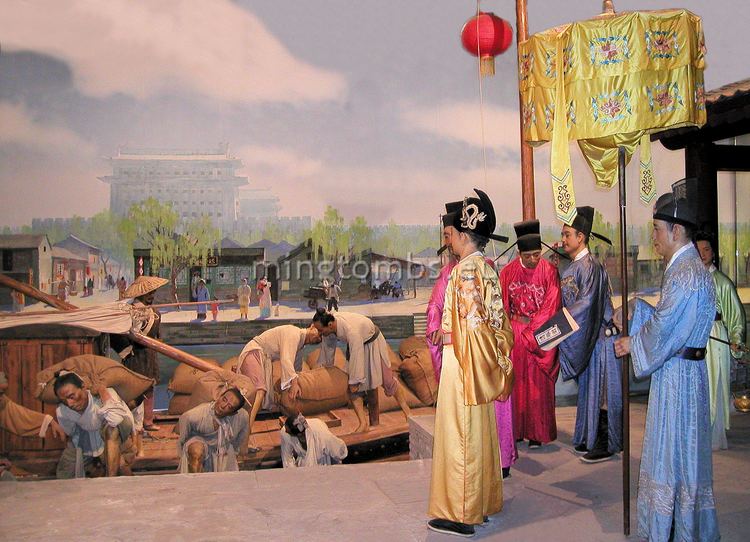
As Zhang Juzheng was appointed Minister of Ming dynasty in 1572, he launched a reform by the name of “abiding by ancestors’ rules”. He started from rectifying administration with a series of measures such as reducing redundant personnel and enhancing assessment of officials’ performance. This improved officials’ quality and efficiency of administration, and based on such facts he launched relevant reforms in the fields of land, finance, and military affairs. In essence, Zhang Juzheng’s reform was a rectification of social maladies without offending the established political and fiscal system of the Ming Dynasty. Although it did not eradicate political corruption and land annexation, it positively relieved social contradictions. More over, Zhang efficiently protected the dynasty from Japan, Jurchens and Mongols so he could save national defense expenditure. By the 1580s, Zhang stored an astronomical amount of silver, worth second only to 10 years of Ming's total tax revenue. The first ten years of Wanli's regime led to a renaissance, economically, culturally and militarily, an era known in China as Wanli's renaissance (萬曆中興)).
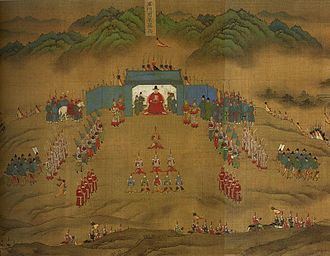
During the first ten years of the Wanli era, the Ming dynasty's economy and military power prospered in a way not seen since the Yongle Emperor and the Rule of Ren and Xuan from 1402 to 1435. After Zhang's death, the Wanli Emperor felt free to act independently, and reversed many of Zhang's administrative improvements. In 1584, the Wanli Emperor issued an edict confiscating all of Zhang's personal wealth and purging his family members. Especially after 1586 when he had conflicts with vassals about his heir, Wanli decided to not hold the council for 20 years. The Ming dynasty's decline began in the interim.
Middle reign (1582–1600)
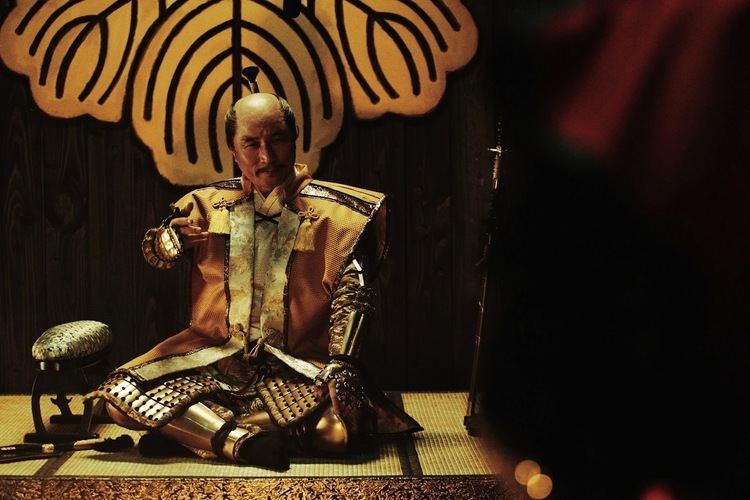
After Zhang Juzheng's death, the Wanli Emperor decided to take complete personal control of the government. During this early part of his reign, he showed himself to be a competent and diligent emperor. Overall, the economy continued to prosper and the empire remained powerful. Unlike the last 20 years of his reign, the Wanli Emperor at this time would attend every morning meeting and discuss affairs of state.
The first 18 years of the Wanli era would be dominated by three wars that he dealt with successfully:
After the last of these three wars were concluded, the Wanli Emperor withdrew from active participation in morning meetings, a practice which he continued throughout the rest of his reign.
Late reign (1600–1620)
During the later years of the Wanli Emperor's reign, he became thoroughly alienated from his imperial role and, in effect, went on strike. He refused to attend morning meetings, see his ministers or act upon memoranda. He also refused to make necessary personnel appointments, and as a result the whole top echelon of the Ming administration became understaffed. He did, however, pay close attention to the construction of his own tomb, a magnificent structure that took decades to complete.
There are several reasons why the Wanli Emperor deliberately neglected his duties as emperor. One was that he became disenchanted with the moralistic attacks and counterattacks of officials, rooted in an abstract Confucian orthodoxy. A more important reason, though, was a dispute about the imperial succession. The emperor's favorite consort was Noble Consort Zheng, and throughout the 1580s and 1590s, the emperor very much wanted to promote his son by her (Zhu Changxun) as crown prince, even though he was only the emperor's third son and not favored for the succession. Many of his powerful ministers were opposed, and this led to a clash between sovereign and ministers that lasted more than 15 years. In October 1601, the Wanli Emperor finally gave in and promoted Zhu Changluo – the future Taichang Emperor – as crown prince. Although the ministers seem to have triumphed, the Wanli Emperor adopted a policy of passive resistance, refusing to play his part in allowing the government to function adequately, leading to serious problems both within China itself and on the borders. Additionally, the emperor continued to empress his objection to the choice of Zhu Changluo as heir apparent, even delaying the burial of Crown Princess Guo by two years, before allowing her to be buried appropriately for the wife of the crown prince.
At this time began the growth of what would become the Manchu threat. The area known as Manchuria in northeastern China was gradually conquered by the Jurchen chieftain Nurhaci. Nurhaci would go on to create the Later Jin dynasty (the precursor of the Qing dynasty), which would now become an immediate threat to the Ming dynasty. By this time, after 20 years of imperial dysfunction, the Ming army was in steep decline. While the Jurchens were fewer in number, they were fiercer and better fighters. For instance, in the Battle of Nun Er Chu in 1619, the Ming government sent out an army of 200,000 against the Later Jin army of 60,000, with Nurhaci controlling six banners and 45,000 troops as the central attack, while Daišan and Huangtaiji each controlled 7,500 troops and one banner and attacked from the sides. After five days of battle, the Ming army suffered casualties of over 100,000, with 70% of their food supply stolen.
The Oirats transmitted some garbled and incorrect descriptions of China to the Russians in 1614, the name "Taibykankan" was used to refer to the Wanli emperor by the Oirats.
Palace assault
In 1615, the Ming imperial court was hit by yet another scandal. A man named Zhang Chai (張差), armed with only a wooden staff, managed to chase away the eunuchs guarding the gates and broke into Ciqing Palace (慈慶宮), then the Crown Prince's living quarters. Zhang Chai was eventually subdued and thrown into prison. Initial investigation found him to be a lunatic, but upon further investigation by a magistrate named Wang Zhicai (王之寀), Zhang Chai confessed to being party to a plot instigated by two eunuchs working under Noble Consort Zheng. According to Zhang Chai's confession, the two had promised him rewards for assaulting the Crown Prince, thus implicating the Emperor's favorite concubine in an assassination plot. Presented with the incriminating evidence and the gravity of the accusations, the Wanli Emperor, in an attempt to spare Noble Consort Zheng, personally presided over the case. He laid the full blame on the two implicated eunuchs who were executed along with the would-be assassin. Although the case was quickly hushed up, it did not quash public discussion and eventually became known as the "Case of the Wooden Staff Assault" (梃擊案), one of three notorious 'mysteries' of the late Ming dynasty.
Legacy and death
Many scholars of Chinese history believe that the Wanli Emperor's reign was a significant factor contributing to the decline of the Ming dynasty. He refused to play the emperor's role in government, and delegated many responsibilities to eunuchs, who made up their own faction. The official administration was so dissatisfied that a group of scholars and political activists loyal to the thoughts of Zhu Xi and against those of Wang Yangming created the Donglin Movement, a political group who believed in upright morals and tried to influence the government according to strict Neo-Confucian principles.
His reign also experienced heavy fiscal and military pressures, especially during the final years of the Wanli era when the Manchus began to conduct raids on the northern border of the Ming Empire. Their depredations ultimately led to the fall of the Ming dynasty in 1644. It has been said that the fall of the Ming dynasty was not a result of the Chongzhen Emperor's rule but instead due to the Wanli Emperor's gross neglect of his duties as Emperor.
The Wanli Emperor died in 1620 and was buried in the Dingling Mausoleum among the Ming tombs on the outskirts of Beijing. His tomb is one of the biggest in the vicinity and one of only two that are open to the public. The tomb was excavated in 1956, and remains the only imperial tomb that had been excavated since the founding of the People's Republic of China in 1949. In 1966, during the Cultural Revolution, Red Guards stormed the Dingling Mausoleum, and dragged the remains of the Wanli Emperor and his two empresses to the front of the tomb, where they were posthumously denounced and burned after photographs were taken of their skulls. Thousands of other artifacts were also destroyed.
In 1997, China's Ministry of Public Security published a book on the history of drug abuse. It stated that the Wanli Emperor's remains had been examined in 1958 and found to contain morphine residues at levels which indicate that he had been a heavy and habitual user of opium. According to Dikötter's Narcotic Culture: A History of Drugs in China, Madak was introduced in China by Dutch traders between 1624 and 1660. Before that, Chinese only used opium in medicinal purposes, so therefore the Wanli Emperor could not have been addicted in smoking opium.
Many old Chinese history books on the Ming dynasty commonly assert that Wanli’s regime caused the rapid downfall of the dynasty. However, there are different opinions as to why Wanli was neglectful for a long time. Some historians claim that he had severe depression after Zhang’s death in 1582, that he was a heavy and habitual user of opium and that he suffered from rare malady on his back and leg, so he couldn’t walk himself without help. When his tomb was excavated in 1958, his body was restored and historians found out that Wanli’s upper body was noticeably bent. As a result of problems that he might have had, Wanli could not rule the dynasty in the right way. Twenty years after his death the Ming dynasty was conquered by the Jurchens (Qing dynasty).
Ironically, Wanli is considered as one of the worst emperors in Chinese history but he is held in high regards in Korea because Wanli had strongly demanded protection of Joseon from Japan's invasion in 1592. Wanli sent approximately 43,000 soldiers with 100,000 bags of rice for the people of Joseon. During Japan's invasion from 1592 to 1598, the emperor sent more than 100,000 soldiers and he spent tremendous amounts of money for war, in excess of 5 years of tax revenues. Many historians assume that this war completely destroyed the Ming economy and caused the rapid downfall of the dynasty. After all, Wanli had acquired "emperor of Joseon dynasty" as a nickname in China where as in Korea a ritual is held for Wanlie annually.
Consorts
Concubines
Sons
The Wanli Emperor fathered eight male children. The eldest became the Taichang Emperor, and another three died at a very young age. Others were executed during the early years of the Qing dynasty.
Daughters
The Wanli Emperor fathered ten daughters, but only the first two survived childhood.
